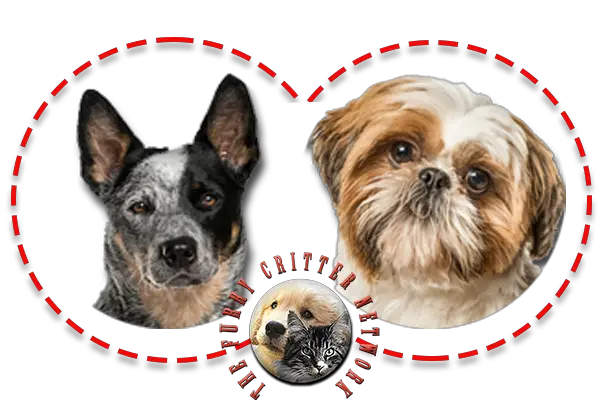Australian Cattle Dog Breed Description - Cross #1
The general appearance is that of a strong compact, symmetrically built working dog, with the ability and willingness to carry out his allotted task however arduous. As the name implies the dog's prime function, and one in which he has no peer, is the control and movement of cattle in both wide open and confined areas. Always alert, extremely intelligent, watchful, courageous and trustworthy, with an implicit devotion to duty making it an ideal dog.
The female Australian Cattle Dog measures approximately 43–48 centimetres (17–19 in) at the withers, and the male measures about 46–51 centimetres (18–20 in) at the withers. The dog should be longer than tall, that is, the length of the body from breast bone to buttocks is greater than the height at the withers, in a ratio of 10 to 9. An Australian Cattle Dog in good condition weighs around 18–25 kilograms (40–55 lb).
A puppy whose colored hair has not yet developed will grow through the puppy's white coat as it matures. There are two accepted coat colors, red and blue. Blue dogs can be blue, blue mottled, or blue speckled with tan on the legs and chest and white markings and a black patch or "mask" on one or both sides of the head. Red dogs are evenly speckled with solid red markings and similarly to the blue dogs can have a brown (red) patch "mask" on one or both sides of the head and sometimes on the body.
Both red dogs and blue dogs are born white (except for any solid-colored body or face markings) and the red or black hairs show from around 4-weeks of age as they grow and mature. The distinctive adult coloration is the result of black or red hairs closely interspersed through a predominantly white coat. This is not merle coloration (a speckled effect that has associated health issues), but rather the result of the ticking gene. A number of breeds show ticking, which is the presence of color through white areas, though the overall effect depends on other genes that will modify the size, shape and density of the ticking.
In addition to the primary coloration, an Australian Cattle Dog displays some patches of solid or near-solid color. In both red and blue dogs, the most common are masks over one or both eyes, a white tip to the tail, a solid spot at the base of the tail, and sometimes solid spots on the body.
The mask consists of a black patch over one or both eyes (for the blue coat color) or a red patch over one or both eyes (for the red coat color). Depending on whether one or both eyes have a patch, these are called, respectively, "single" (or "half") mask and "double" (or "full") mask. Dogs without a mask are called plain-faced. Any of these are acceptable according to the breed standard. In conformation shows, even markings are preferred over uneven markings.






